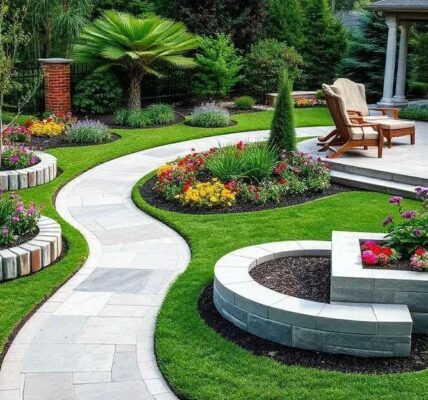Home landscaping can truly elevate the beauty and functionality of your outdoor space. Whether you’re looking to create a serene garden, a vibrant entertainment area, or simply enhance your home’s curb appeal, there are essential tips to consider.
In this article, we’ll explore key strategies that can help you achieve stunning results without breaking the bank. From selecting the right plants to incorporating hardscaping elements, let’s dive into how you can transform your yard into a personal paradise.
Understanding Your Landscape Design Goals
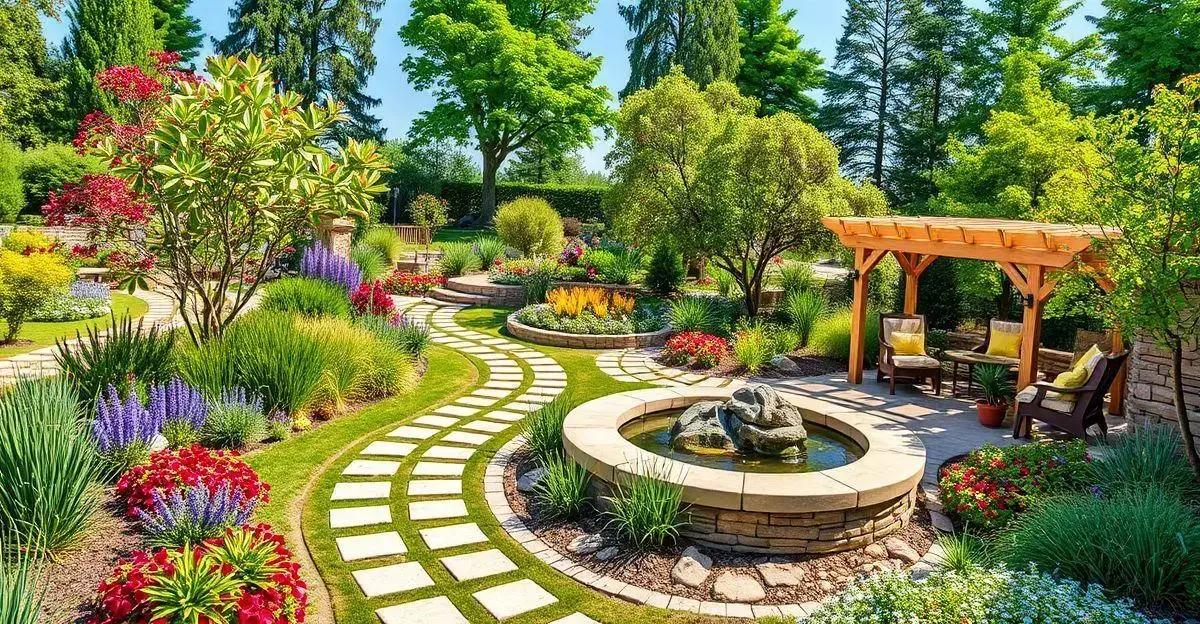
Before you dive into home landscaping, it’s crucial to understand your landscape design goals. What do you want to achieve with your outdoor space? Are you aiming for a tranquil retreat, a lively gathering area, or perhaps a mix of both? Taking the time to define these goals will guide your decisions throughout the landscaping process.
First off, consider how you plan to use your yard. If you have kids or pets, you might prioritize open spaces for play. On the other hand, if you love entertaining, think about creating zones for seating and dining. Visualizing how you’ll interact with the space can help shape your design.
Next, think about the style you want to convey. Whether it’s modern, rustic, or tropical, your landscape should reflect your personal taste and complement your home’s architecture. Look for inspiration in magazines, online platforms, or even your neighbors’ yards. Pinterest is a treasure trove for landscaping ideas!
Lastly, don’t forget about the practical aspects. Consider your budget, the time you can devote to maintenance, and the climate in your area. These factors will influence your plant choices and design elements. For example, if you live in a region with harsh winters, you’ll want to choose hardy plants that can withstand the cold.
By clearly defining your landscape design goals, you set the stage for a successful and satisfying home landscaping project. Remember, it’s all about creating a space that you and your family will love for years to come!
Choosing the Right Plants for Your Climate
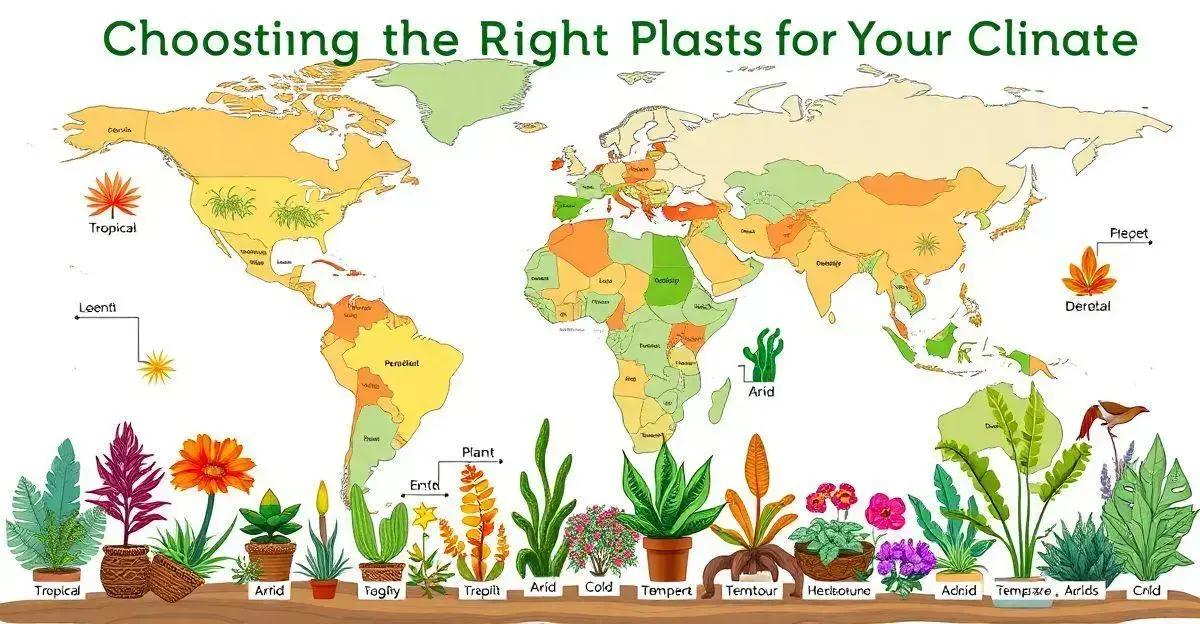
Choosing the right plants for your climate is a crucial step in achieving a successful home landscaping project. Not all plants thrive in every environment, so understanding your local climate zones will help you select flora that will flourish in your yard.
Start by determining your USDA Plant Hardiness Zone. This system divides areas based on their average annual minimum temperatures, helping you identify which plants are likely to survive in your region. You can find this information online or through local gardening centers.
Next, consider the specific conditions of your yard. Is it sunny, shady, or a mix of both? How well does your soil drain? Some plants prefer full sun, while others thrive in partial shade. For instance, if your garden gets a lot of sun, you might want to consider drought-resistant plants like succulents or lavender. On the flip side, if you have a shady area, ferns or hostas can be great choices.
Another important factor is the local rainfall and humidity levels. If you live in a dry area, opting for native plants that require less water can save you time and resources in the long run. Native plants are adapted to your local environment, making them more resilient and easier to care for.
Lastly, think about the seasons. Selecting a variety of plants that bloom at different times throughout the year can ensure that your landscape remains vibrant and colorful, no matter the season. For example, you might plant spring-blooming tulips alongside summer-blooming coneflowers for a year-round display.
By carefully choosing the right plants for your climate, you not only enhance the beauty of your landscape but also create a sustainable environment that requires less maintenance and water. It’s a win-win!
Incorporating Hardscaping Elements
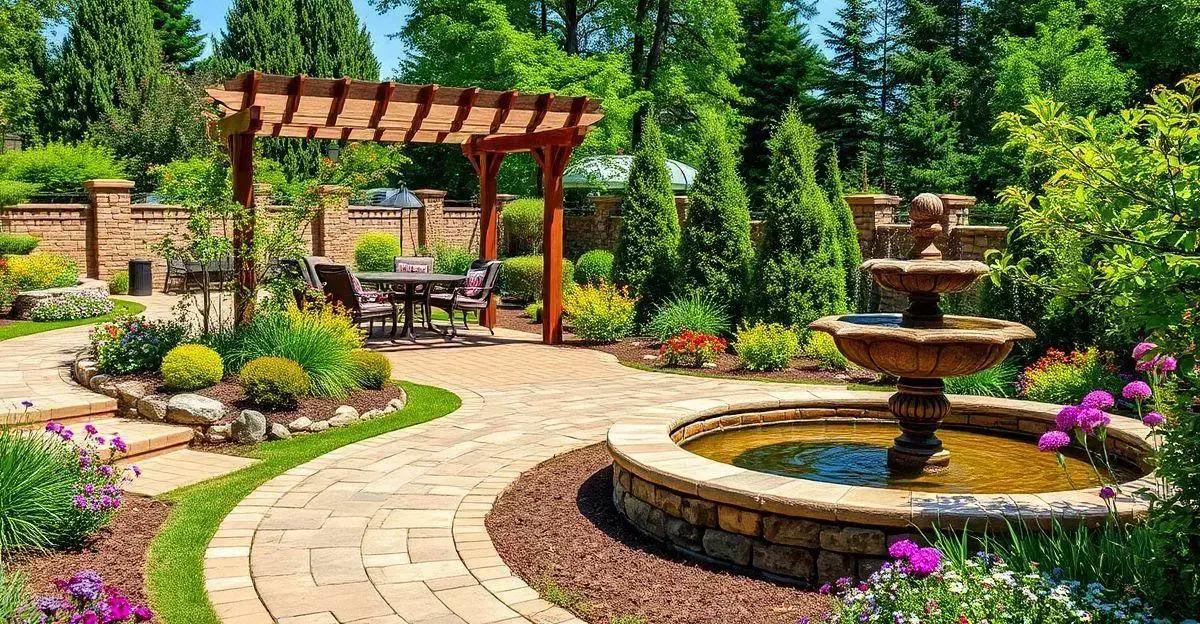
Incorporating hardscaping elements into your home landscaping design can significantly enhance the functionality and aesthetic appeal of your outdoor space. Hardscaping refers to the non-plant elements in your landscape, such as patios, pathways, retaining walls, and decorative stones. These features provide structure and can help define different areas of your yard.
One of the first things to consider is how you want to use your space. If you enjoy outdoor dining or entertaining, a patio made of pavers or natural stone can create a perfect gathering spot. Add some comfortable furniture and maybe a fire pit, and you’ve got an inviting area for family and friends.
Pathways are another essential hardscaping element that can guide visitors through your yard. They not only enhance the visual flow but also provide practical access to different areas. You can choose from various materials, like gravel, brick, or flagstone, depending on your style and budget. Curved pathways often create a more relaxed feel, while straight lines can give a more formal look.
Retaining walls are particularly useful in sloped yards, helping to prevent erosion and create flat areas for planting or recreation. They can be built using natural stone, concrete blocks, or even timber, and can double as seating for outdoor gatherings. Plus, they add a beautiful visual element to your landscape.
Don’t forget about decorative features! Incorporating elements like fountains, benches, or sculptures can add personality and charm to your yard. These touches make your landscape feel more inviting and can reflect your personal style.
By thoughtfully integrating hardscaping elements into your landscape design, you create a balanced and functional outdoor environment. It’s all about finding the right mix that complements your home and meets your lifestyle needs.
Creating Functional Outdoor Spaces
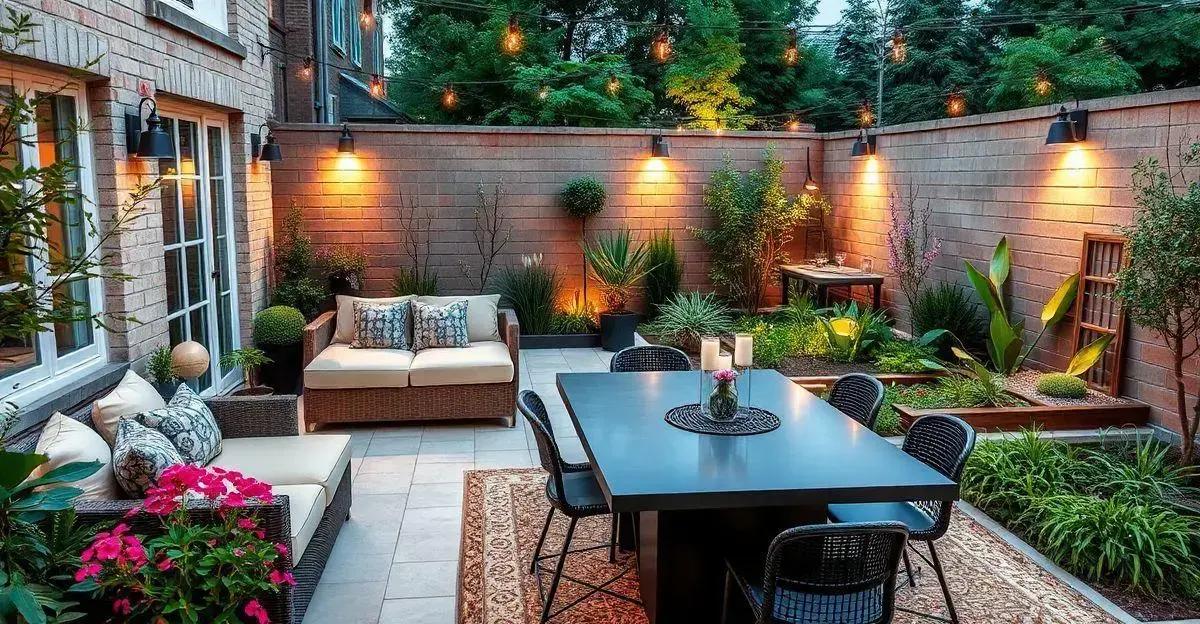
Creating functional outdoor spaces is an essential aspect of home landscaping that can greatly enhance your lifestyle and enjoyment of your yard. When designing these areas, think about how you and your family will use the space, and tailor it to meet those needs.
Start by identifying the key activities you want to enjoy outdoors. Do you love hosting barbecues? A spacious deck or patio with a built-in grill and seating can make all the difference. If relaxation is your goal, consider a cozy nook with comfortable chairs or a hammock nestled among your plants. The key is to create zones that cater to different activities.
Next, consider the flow of your outdoor space. How will people move from one area to another? Pathways and transitions should be intuitive, guiding guests seamlessly from the dining area to the garden or fire pit. Using materials that complement your hardscaping elements can help tie everything together visually.
Incorporating shade structures, like pergolas or awnings, can also enhance functionality by providing relief from the sun during hot days. These structures can be adorned with climbing plants or string lights to create an inviting atmosphere for evening gatherings.
Don’t overlook the importance of lighting! Installing outdoor lighting not only enhances safety but also sets the mood for nighttime activities. Consider solar lights along pathways, string lights over seating areas, or spotlights to highlight key features in your landscape.
Lastly, think about storage solutions for outdoor gear. Whether it’s a stylish shed for tools or benches with hidden compartments for cushions, having designated storage keeps your space tidy and functional. This way, you can enjoy your outdoor oasis without clutter.
By focusing on creating functional outdoor spaces, you ensure that your landscaping not only looks great but also serves the practical needs of your lifestyle. It’s all about making your yard a true extension of your home!
Maintenance Tips for a Thriving Landscape
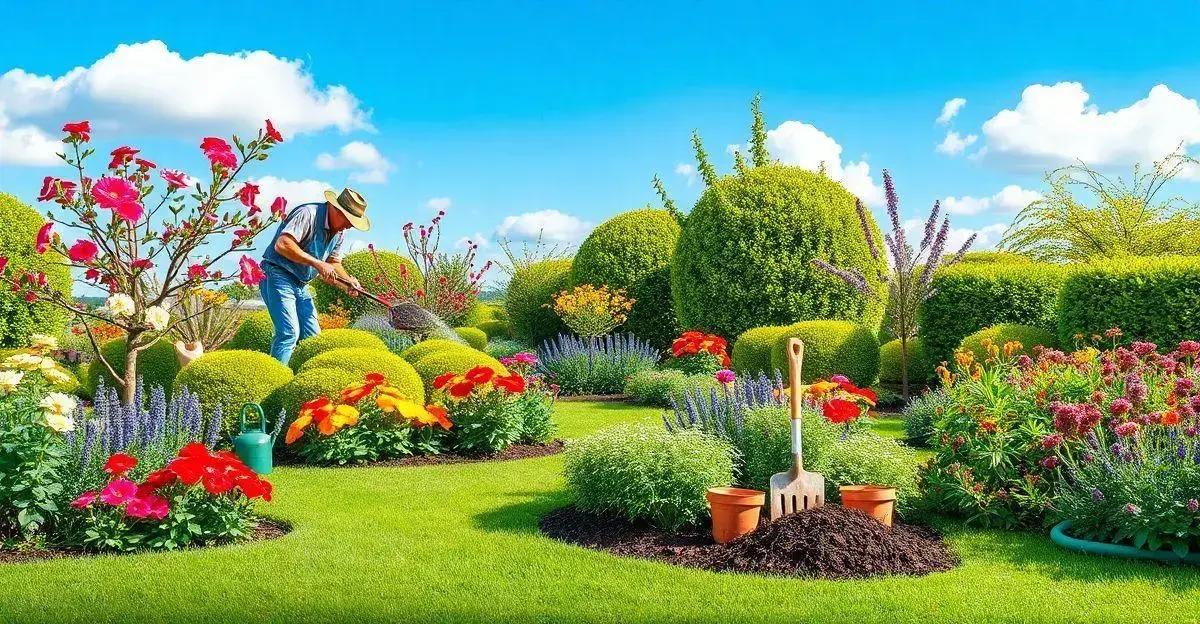
Maintaining a thriving landscape is key to ensuring that your home landscaping investment pays off over time. With a little effort and planning, you can keep your outdoor space looking beautiful and healthy throughout the seasons. Here are some essential maintenance tips to help you achieve that.
First and foremost, regular watering is crucial. While some plants are drought-resistant, most will need consistent moisture to thrive. A good rule of thumb is to water deeply and less frequently, encouraging roots to grow deeper into the soil. Early morning is the best time to water, as it reduces evaporation and helps prevent fungal diseases.
Next, make sure to mulch around your plants. Mulching not only helps retain soil moisture but also suppresses weeds and regulates soil temperature. Organic mulches, like wood chips or straw, can also enrich the soil as they break down over time.
Don’t forget about pruning! Regularly trimming back overgrown plants and removing dead or diseased branches keeps your landscape looking neat and encourages healthy growth. Each plant has its own pruning needs, so it’s worth doing a little research to understand the best practices for your specific varieties.
Weed control is another important aspect of maintenance. Weeds compete with your plants for nutrients and water, so it’s essential to keep them in check. Hand-pulling is effective for small infestations, while a layer of mulch can help prevent them from taking root in the first place. For larger areas, consider using landscape fabric to block weed growth.
Fertilizing your plants can also promote healthy growth. Depending on the types of plants you have, you may need to apply fertilizer in the spring or fall. Always follow the recommended guidelines for application to avoid over-fertilizing, which can harm your plants.
Lastly, keep an eye out for pests and diseases. Regularly inspecting your plants can help you catch issues early, making them easier to manage. If you notice any problems, consult with your local garden center or extension office for advice on treatment options.
By following these maintenance tips, you can ensure that your landscape remains vibrant and thriving year-round. A little effort goes a long way in preserving the beauty and health of your outdoor space!
Budgeting for Your Landscaping Project
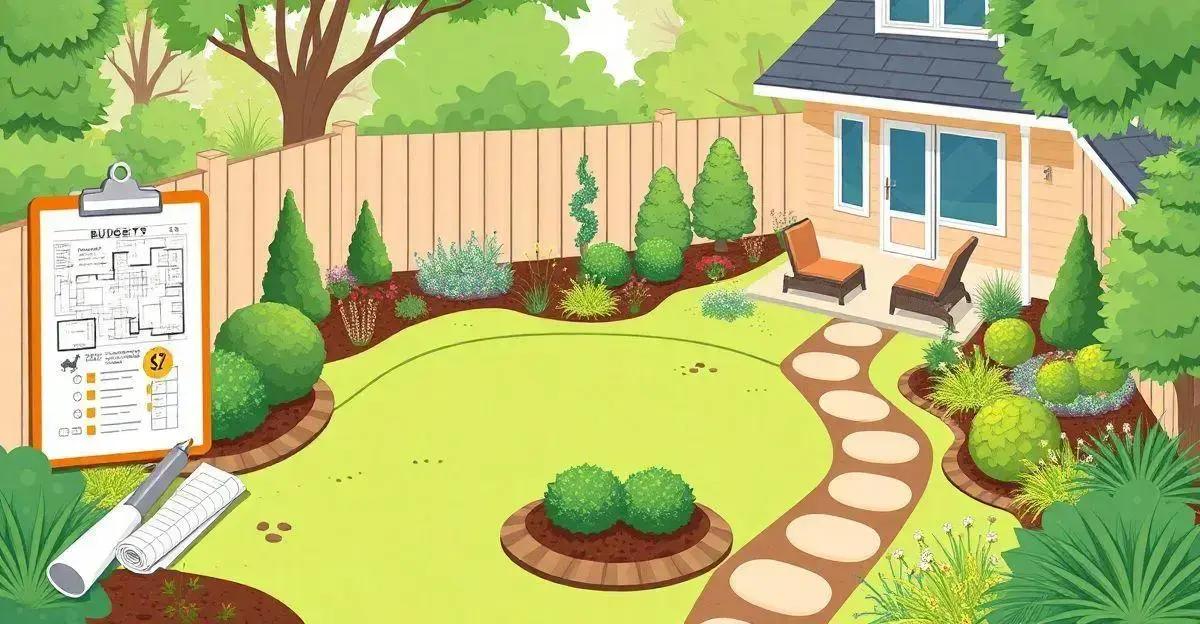
Budgeting for your landscaping project is a crucial step in ensuring that you achieve your desired results without breaking the bank. A well-planned budget helps you prioritize your spending and make informed decisions about where to invest your money. Here are some key considerations to keep in mind as you create your landscaping budget.
Start by determining your overall budget. Consider how much you can realistically spend without straining your finances. It’s helpful to set a maximum limit, but also allow some flexibility for unexpected expenses. Landscaping projects often come with surprises, so having a cushion can save you from stress later on.
Next, break down your budget into categories. Consider how much you want to allocate for plants, hardscaping materials, labor, and maintenance. Research costs for different plants and materials to get a clearer picture of what you can afford. Local garden centers and home improvement stores can provide valuable pricing information.
Don’t forget to factor in labor costs if you plan to hire professionals. While DIY projects can save you money, some tasks may require expert help, especially if they involve heavy machinery or specialized skills. Get quotes from multiple contractors to ensure you’re getting a fair price.
Consider the long-term costs as well. Some plants require more maintenance, while others are more drought-resistant and will save you money on water bills. Investing in quality materials and plants can lead to lower maintenance costs in the future, making it a smart financial decision.
Finally, keep track of your expenses throughout the project. This will help you stay within your budget and make adjustments if necessary. If you find that you’re overspending in one area, you might consider scaling back in another to balance things out.
By carefully budgeting for your landscaping project, you can create a beautiful outdoor space that meets your needs while staying within your financial means. Remember, planning is key, and a little foresight can go a long way in achieving your landscaping dreams!
Conclusion
In summary, transforming your outdoor space through thoughtful home landscaping can significantly enhance the beauty and functionality of your property.
By understanding your landscape design goals, choosing the right plants for your climate, incorporating hardscaping elements, creating functional outdoor spaces, and maintaining your landscape effectively, you set the stage for a thriving garden that reflects your personal style and meets your lifestyle needs.
Moreover, budgeting wisely for your landscaping project ensures that you can achieve your vision without financial strain.
Remember, a well-planned landscape not only elevates your home’s curb appeal but also provides a serene environment for relaxation and enjoyment.
So roll up your sleeves, get creative, and enjoy the journey of bringing your outdoor dreams to life!
FAQ – Common Questions About Home Landscaping
What are the first steps to take when starting a landscaping project?
Begin by defining your landscape design goals, assessing your space, and setting a realistic budget.
How can I choose the right plants for my yard?
Research your USDA Plant Hardiness Zone and consider factors like sunlight, soil type, and local climate conditions.
What is hardscaping, and why is it important?
Hardscaping refers to non-plant elements like patios and pathways, which provide structure and enhance the functionality of your outdoor space.
How do I maintain my landscape throughout the seasons?
Regular watering, mulching, pruning, and monitoring for pests are essential for keeping your landscape healthy.
What should I consider when budgeting for landscaping?
Determine your overall budget, break it down into categories, and factor in both immediate costs and long-term maintenance expenses.
Can I do landscaping myself, or should I hire a professional?
It depends on your skill level and the complexity of the project. DIY can save money, but some tasks may require professional expertise.

